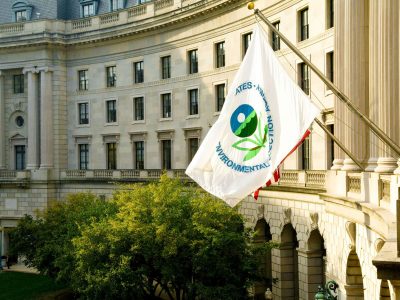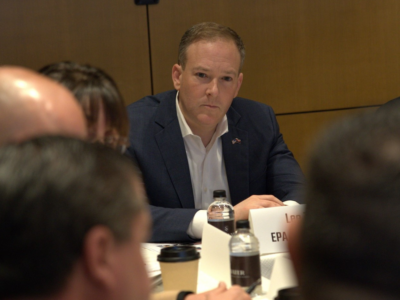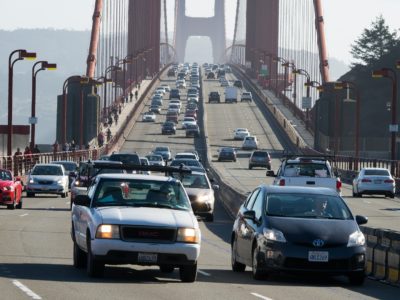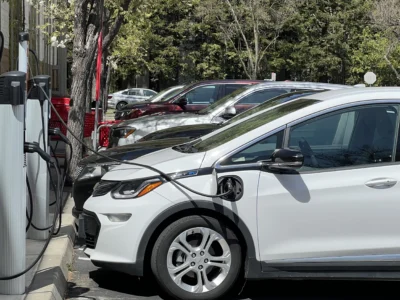air pollution
Could Zero-Emission Hydrogen Help Reduce Aviation Emissions in California?
State’s federally funded hydrogen hub releases aviation whitepaper co-led by CLEE.
Few industries face as complex a challenge in decarbonizing as aviation. While great for decarbonizing on-road transportation, batteries are generally too heavy to power long-distance flights. Low-carbon biofuels blended into fossil jet fuel represent only a partial solution, due to lack of feedstocks and blend limits. Zero-emission hydrogen could represent a solution, either as an …
Continue reading “Could Zero-Emission Hydrogen Help Reduce Aviation Emissions in California?”
CONTINUE READINGWhat Happened to EPA Enforcement?
Enforcement efforts peaked long ago and have been in long-term decline. Trump will accelerate that.
There has been a long-term decline in EPA enforcement since the late Bush Administration. The numbers raise three questions: What’s behind the long-term trend? Why has pollution generally continued to decline despite weaker enforcement? And how bad will things be under Trump II? As to the third question, Trump has already made it clear that we can expect environmental enforcement to crash and burn in the next four years.
CONTINUE READING100 Days of Anti-Environmental Mayhem
A flood of anti-environmental initiatives threatens to undo decades of progress.
the Administration has withheld funding for clean technology, denounced the very idea of environmental justice, and begun a campaign to gut environmental agencies. And that’s only the first hundred days of Trump’s second term.How far Trump gets with this anti-environmental jihad will depend partly on the courts but mostly on politics. Events relating to the economy and provision of basic government services are likely to have as much impact on how things play out than anything specific to the environment.
CONTINUE READINGMake America’s Environment Filthy Again
EPA Administrator Lee Zeldin has launched a full-scale attack on climate, air and water pollution.
In what is one of the most mind-boggling press releases ever to come out of the Environmental Protection Agency, Administrator Lee Zeldin today declared that he wants to make America’s air and water dirty again and to make the planet still warmer. He announced 31 actions that will obliterate protections for cleaner air, cleaner water, …
Continue reading “Make America’s Environment Filthy Again”
CONTINUE READINGThe California Car Waiver and the Congressional Review Act
Trump has found a possible way to end run California’s legal arguments for the waiver. But there’s no reason to give up.
If the CRA resolution does go through, California should wait until after the midterms, when Democrats are favored to take the House, and then try again with different formulated regulations. When the Trump Administration rejects them, it could then litigate whether the new versions were “substantially the same” as the old ones.
CONTINUE READINGThere are Piles of Coal in America’s Christmas Stocking
Coal is piling up, unused, at powerplants across the country
Bad children, supposedly, will get only lumps of coal in their stockings. That could be taken as a metaphor for the anti-environmental programs coming down the line, but I have in mind something a bit less metaphorical. According to a recent report, coal-fired power plants have immense piles of coal – 138 million tons, equal …
Continue reading “There are Piles of Coal in America’s Christmas Stocking”
CONTINUE READINGSix Sleeper Proposals in Project 2025
Project 2025 isn’t just its headline proposals. It’s a thorough, detailed attack on environmental protection.
Project 2025’s proposals involve reduced protection for endangered species, eliminating energy efficiency rules, blocking new transmission lines, changing electricity regulation to favor fossil fuels, weakening air pollution rules, and encouraging sale of gas guzzlers. There’s some pious talk about protecting the environment, but every proposal calls for weakening environmental protections.
CONTINUE READINGElectric Shared Mobility:
Program Design Elements Can Produce More Equitable, Durable, and Successful Projects
Shared mobility—an umbrella term for any transportation mode shared among multiple passengers—has the potential to accelerate transportation electrification, air quality, and greenhouse gas reduction goals, meet the needs of underserved communities that most lack mobility access, and advance broader mobility equity goals. CLEE’s report, Electric Shared Mobility: California Lessons Learned for Equity in Program Design, …
Continue reading “Electric Shared Mobility:”
CONTINUE READINGNo, EVs are Not Worse for the Planet
There’s an electric car culture war raging. It doesn’t hurt to say obvious things, like that electric cars reduce driving costs and pollute far less than gas-powered cars.
If you have somehow managed to escape the frenzied political headlines about electric vehicles, first I envy you and second, I must regrettably inform you that the EV has become an acronym of partisan rancor on par with IVF, DEI, and CRT. There’s a lot of reasons for this electric car culture war: President Biden …
Continue reading “No, EVs are Not Worse for the Planet”
CONTINUE READINGThe New EPA Car Rule Doesn’t Violate the Major Questions Doctrine
They both relate to climate, but West Virginia v. EPA involved a very different regulation raising very different issues.
In West Virginia v. EPA, the Supreme Court struck down the Obama-era Clean Power Plan. The heart of the ruling was that EPA had engaged in a power grab, basing an unprecedented expansion of its regulatory authority on an obscure provision of the statute. Conservative groups have claimed since then that virtually every government regulation …
Continue reading “The New EPA Car Rule Doesn’t Violate the Major Questions Doctrine”
CONTINUE READING












